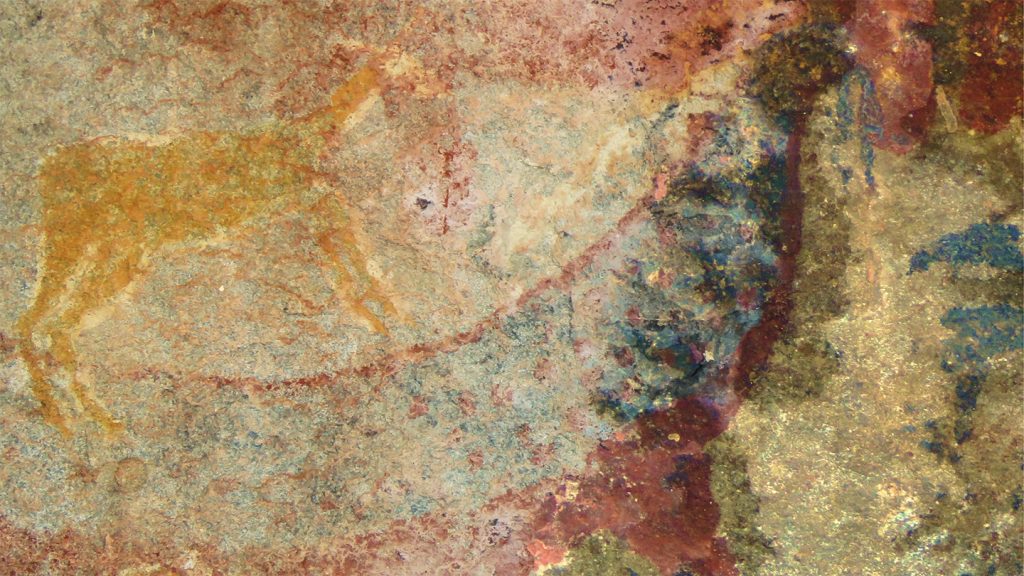A recent study has uncovered rock art in South Africa that depicts a mysterious, tusked creature. The painting is estimated to have been created between 1821 and 1835, possibly representing a rain animal from San folklore. The creature depicted resembles a dicynodont, an extinct animal that lived over 200 million years ago, making it possible that San myths of large creatures influenced the rock art.
Dicynodonts lived from around 270 million to nearly 200 million years ago, and researchers have found San stone tools near dicynodont fossils. This suggests a connection between the creatures and ancient human populations in southern Africa. The discovery of rock art panel with a tusked creature has led to speculation about how Indigenous Africans may have collected fossils and incorporated them into spiritual beliefs and art, long before scientific descriptions of these animals were available.
In addition to the tusked creature, other dinosaur-related rock art has been found in Lesotho’s Mokhali Cave, near preserved dinosaur footprints and fossils. The art includes the outline of a dinosaur footprint and three dinosaur silhouettes, showcasing the San people’s detailed knowledge of these ancient creatures. By discerning that dinosaurs did not leave handprints or tail drag marks, the San artists accurately depicted the dinosaurs with short tails and no arms in their artwork.
The discovery of these ancient rock art pieces highlights the rich history of the San people in southern Africa and their deep connection to the land and its creatures. The art provides clues to how ancient human populations may have interacted with and depicted the animals that once roamed the region. This new research sheds light on the intricate relationships between humans and the natural world in the past, offering insights into how Indigenous cultures viewed and interpreted the environment around them.
The research on the tusked creature rock art panel opens up new avenues of exploration into the history of rock art and its connection to ancient civilizations. By studying these artworks, scientists and researchers can gain a deeper understanding of how past societies viewed animals, nature, and the spiritual beliefs that guided their interactions with the world. These findings invite further investigation into the intersection of art, myth, and science in shaping our understanding of the past and the evolving climate of our planet.
Overall, the discovery of the tusked creature rock art panel in South Africa adds to our knowledge of the diverse ways in which ancient human societies interacted with and depicted the natural world. The artwork provides a window into the rich cultural history of the San people and their deep connection to the creatures and environment around them. By delving into these ancient artworks, researchers can uncover valuable insights into how ancient societies viewed and interpreted the world, offering a glimpse into the past and the ways in which human populations have adapted to changing climates and environments over time.















